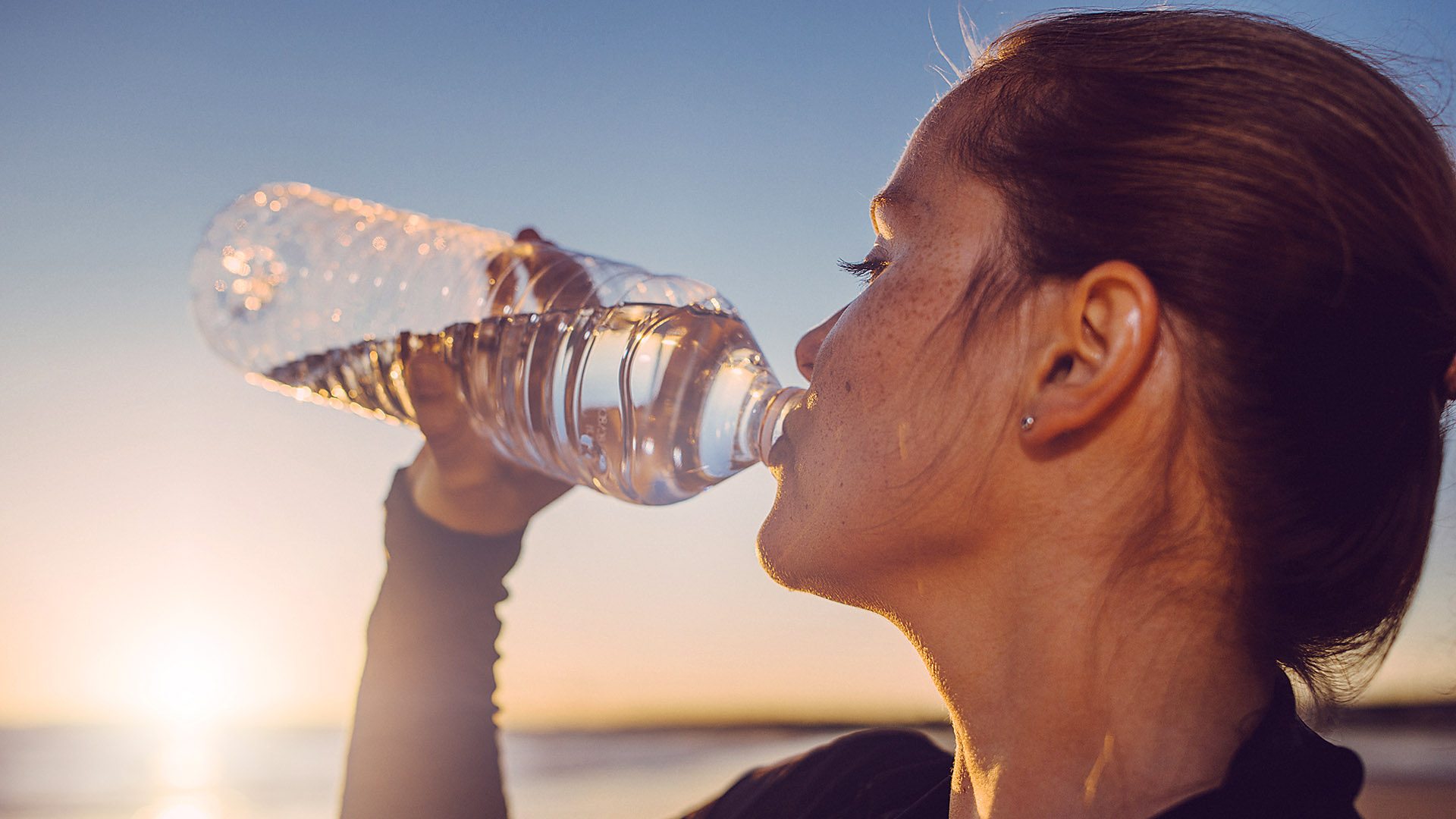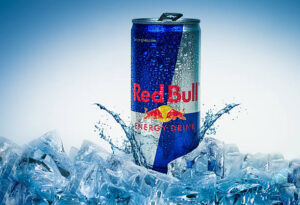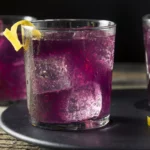The Best Fluffy Pancakes recipe you will fall in love with. Full of tips and tricks to help you make the best pancakes.
Consuming moldy water can cause health problems because it exposes you to mold spores and toxins. Molds like Cladosporium, Penicillium, and Aspergillus can grow in water sources like tanks, bottles, and pipes.
While you may not always see or taste mold in water, its presence can be harmful. Drinking contaminated water means ingesting mold, which can lead to mold-related illnesses.
7 Methods to Clean Moldy Water Bottles
Mold can grow in water bottles, especially if they’re not cleaned regularly or if they’re left damp. If you discover mold in your water bottle, don’t despair! Here are some ways to get mold out of your water bottles:
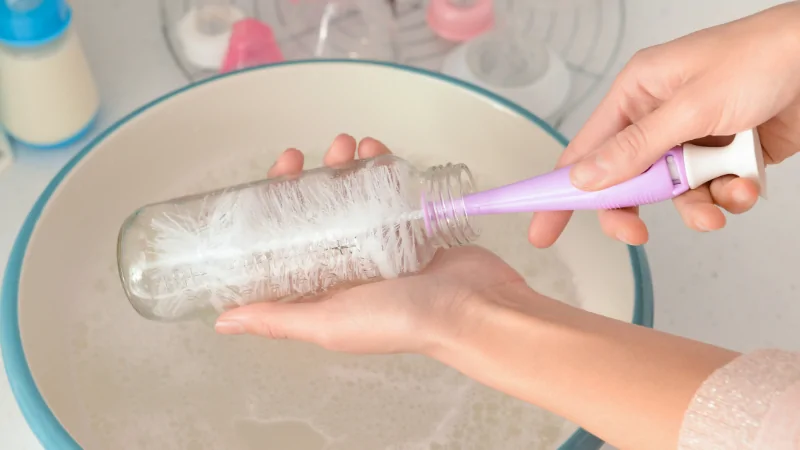
1. Soap and Water
The simplest and most effective method for cleaning moldy water bottles is using soap and water. Begin by disassembling the bottle, separating the lid, straw, and any other detachable parts. Fill the bottle with warm water and a few drops of dish soap. Using a bottle brush, scrub the interior thoroughly, focusing on areas with visible mold.
Clean the lid and other parts separately to ensure all mold is removed. After scrubbing, rinse all parts thoroughly with clean water to remove any soap residue. Finally, let all components air dry completely before reassembling to prevent any moisture from fostering mold growth.
2. Vinegar Solution
White vinegar is a natural disinfectant that can effectively clean mold from water bottles. To use this method, fill the bottle halfway with white vinegar and then fill the rest with water. Close the bottle and shake it vigorously for a minute to mix the solution. Let the mixture sit in the bottle for several hours or overnight to break down the mold.
After the waiting period, empty the bottle and scrub it with a bottle brush to remove any loosened mold. Rinse the bottle thoroughly with clean water and allow it to air dry completely.
3. Baking Soda Paste
Baking soda is another natural cleaning agent that can help remove mold from water bottles. Create a thick paste by mixing baking soda and water. Apply this paste to the inside of the bottle using a bottle brush, scrubbing thoroughly, especially on moldy areas. Let the paste sit for 15-30 minutes to allow the baking soda to work on the mold.
Afterward, rinse the bottle thoroughly with clean water to remove the paste. Ensure the bottle is fully dry by allowing it to air dry completely before using it again.
4. Bleach Solution
A bleach solution is a powerful disinfectant that can effectively kill mold and other bacteria. To clean your water bottle with bleach, mix 1 tablespoon of bleach per gallon of water. Fill the bottle with this solution and let it sit for 2-3 hours or overnight for thorough sanitization.
After soaking, empty the bottle and scrub it with a bottle brush to remove any remaining mold. Rinse the bottle multiple times with clean water to ensure all bleach residue is gone. Allow the bottle to air dry completely before reassembling and using it again.
5. Hydrogen Peroxide
Hydrogen peroxide is another effective method for cleaning moldy water bottles. Fill the bottle with hydrogen peroxide and let it sit for 10-15 minutes. This will help to kill any mold spores present.
After the waiting period, empty the bottle and scrub it with a bottle brush to remove any loosened mold. Rinse thoroughly with clean water to remove any hydrogen peroxide residue. Allow the bottle to air dry completely before reusing it.
6. Dishwasher (If Safe)
If your water bottle is dishwasher safe, this can be a convenient and effective cleaning method. Disassemble the bottle, separating the lid, straw, and other parts. Place all components in the dishwasher and run a normal cycle with dishwasher detergent.
The high heat and detergent will help kill mold and clean the bottle thoroughly. Ensure all parts are completely dry before reassembling to prevent mold from returning.
7. Boiling Water
Boiling water is a natural way to disinfect and clean mold from water bottles. Disassemble the bottle and bring a pot of water to a boil. Carefully place the bottle and its parts in the boiling water using tongs. Boil for 5-10 minutes to kill any mold spores present. Remove the parts and let them cool before scrubbing with a bottle brush if necessary. Rinse with clean water to remove any debris and allow the bottle to air dry completely before reassembling.
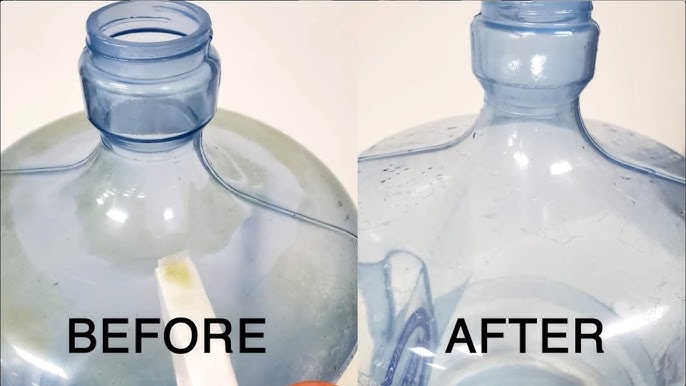
Tips for Preventing Mold Growth in Water
Mold thrives in damp environments, and your water supply can be susceptible if proper precautions aren’t taken. Here are some key strategies to prevent mold growth in your water:
1. Address Moisture Issues
Mold spores are airborne and can settle anywhere with moisture. Addressing moisture problems in your home is crucial to prevent them from finding a breeding ground in your water supply.
Fix Leaks Promptly: Don’t delay fixing leaky pipes, faucets, or appliances. Even small leaks can create damp areas that are ideal for mold growth. Prompt repairs prevent moisture build-up and safeguard your water from contamination.
Maintain Proper Ventilation: Ensure adequate ventilation around areas where water is stored, such as under sinks or in basements. Proper air circulation helps prevent moisture from accumulating and creating a favorable environment for mold spores to germinate and establish themselves.
2. Clean and Maintain Water Sources
Regular cleaning and maintenance of your water storage containers and filtration systems are essential to prevent mold growth.
Regularly Clean Water Filters: Water filters play a crucial role in removing impurities from your water. However, over time, they can trap sediment and debris that can harbor mold spores. Clean your water filters according to the manufacturer’s instructions to maintain their effectiveness and prevent mold growth within the filter itself.
Clean and Disinfect Refillable Containers: Reusable water bottles and containers need regular cleaning and disinfection. Hot soapy water is a good first step, followed by a diluted bleach solution (prepared according to label instructions) to eliminate any lingering mold spores. Remember to rinse thoroughly afterwards to remove any bleach residue that could be harmful if ingested.
Discard Stagnant Water: Don’t let water sit for extended periods in containers or pipes. Stagnant water provides an ideal environment for mold spores to multiply. Consider replacing water in reusable bottles daily or every other day. For water lines that haven’t been used for a while, flush them out to remove any stagnant water that could be harboring mold.
3. Use a Dehumidifier (if necessary)
In areas with high humidity levels, using a dehumidifier can be very helpful. Dehumidifiers remove excess moisture from the air, making it less hospitable for mold growth, including in your water supply.
4. Maintain Proper Water Temperature
Mold spores are more likely to thrive in lukewarm water. Keep your water storage containers in cool, dark places. This discourages mold growth by maintaining cooler water temperatures that are less favorable for mold spores.
5. Consider Water Treatment Options
For private wells or specific water sources, consult with water treatment professionals. They can explore options like chlorination or ultraviolet disinfection systems. These treatment methods can help eliminate mold spores present in your water supply, providing an extra layer of protection.
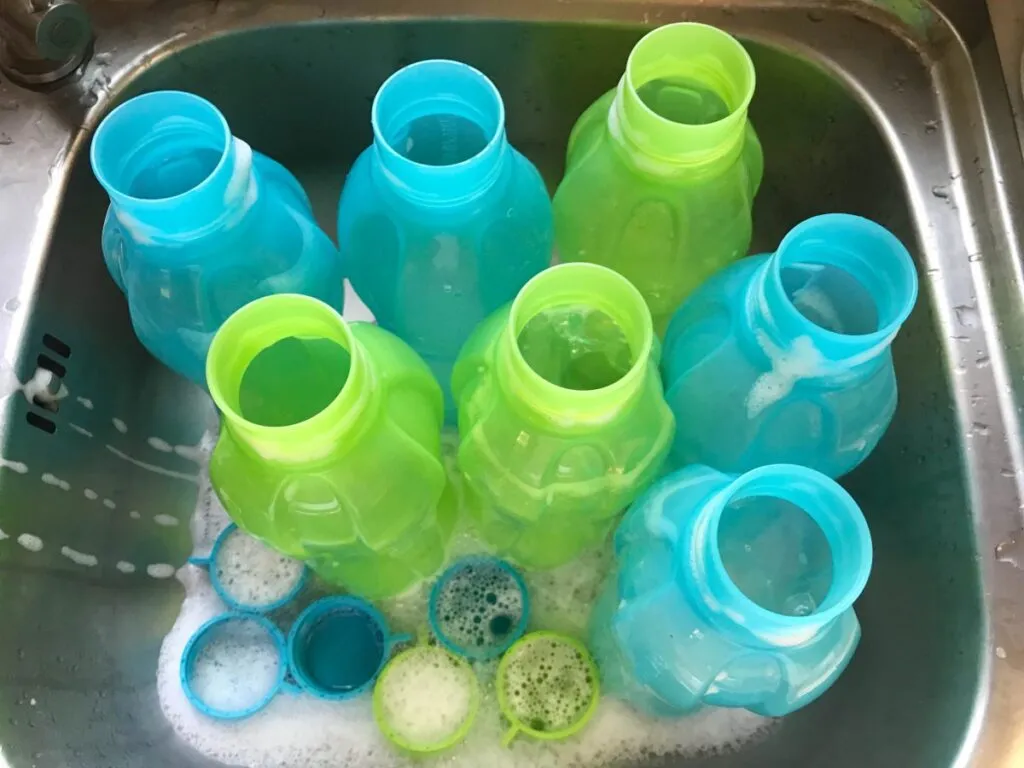
Types of Mold in Water
There are many different types of mold that can grow in water, but some of the most common ones include:
Cladosporium (black mold): This is a black or dark green mold that is commonly found in buildings with water damage. It can cause respiratory problems, skin irritation, and allergic reactions.
Penicillium (green mold): This is a green or blue mold that is commonly found in food that is starting to spoil. It can cause allergic reactions and respiratory problems.
Aspergillus (various colors): This is a type of mold that can come in a variety of colors, including black, green, and yellow. It can cause a variety of health problems, including respiratory infections, allergic reactions, and aspergillosis (a lung disease).
Alternaria (black mold): This is another type of black mold that can cause respiratory problems, skin irritation, and allergic reactions.
Fusarium (various colors): This is a type of mold that can come in a variety of colors, including white, pink, and red. It can cause a variety of health problems, including skin irritation, eye infections, and nail infections.
White mold is not a specific type of mold, but rather a general term for mold that appears white or light-colored. White mold can be just as dangerous as other types of mold, and it can cause the same health problems. If you see any type of mold growing in your water, it is important to discard the water and clean the container thoroughly.
Black mold is a term that is often used generically to refer to any type of dark-colored mold. However, there are many different types of mold that can be black, and not all of them are dangerous. Some types of black mold can cause health problems, but others are relatively harmless.
What causes mold in water?
Mold spores are like tiny hitchhikers, traveling through the air and landing in various places. While they’re airborne, they need a damp environment with a food source to thrive. Here’s a breakdown of what creates the ideal conditions for mold to grow in your water supply:
Moisture: This is the key ingredient. Leaks in pipes, faulty well seals, or condensation inside water bottles can introduce moisture that mold spores need to germinate and establish themselves.
Stagnant Water: Water that sits unused for extended periods allows mold spores more opportunity to multiply. Regularly flushing out water lines and refreshing water in bottles helps prevent this.
Organic Matter in Water: Mold thrives by feeding on organic matter. Trace amounts of organic material can be present in water sources, and even tiny amounts can provide enough sustenance for mold spores to grow.
Improperly Maintained Water Systems: Without proper maintenance, water filters can become clogged with debris that can harbor mold spores. Similarly, poorly maintained wells can allow mold spores to enter the water supply.
Warm Temperatures: While mold can grow in various temperatures, lukewarm environments are more favorable for mold spore germination and growth. Storing water in cool, dark places helps keep the temperature down and discourages mold growth.
Identifying Moldy Water: Common signs
Mold can thrive in damp environments, and unfortunately, your water supply isn’t immune. While not always immediately apparent, mold-contaminated water can pose health risks. So what does moldy water look like? Here’s a breakdown of the common signs to watch out for:
Discolored Water: Look closely at your water. The presence of floating black, green, brown, or white specks, films, or any unusual discoloration can indicate mold growth. Mold itself may not always be readily visible, but these suspended particles serve as a red flag. Small bits of mold in various colors like gray, black, white etc. may be seen floating or suspended in the water.
Surface Scum: A slimy or scummy layer on the surface of your water is a strong indicator of mold. Mold spores can thrive on the water’s surface, forming a visible and unpleasant film.
Mold Growth on Container: Mold doesn’t just grow in the water itself. If you see mold spores establishing themselves on the container, particularly around the rim or inside the cap of a bottle, it’s a clear sign the water is contaminated. This is especially concerning as it suggests ongoing mold growth and potential contamination throughout the container.
Musty or Earthy Smell: Mold often produces a distinctive musty or earthy odor. This is one of the most noticeable signs of moldy water. If your water has a persistent unpleasant odor that deviates from its usual clean scent, it’s a strong possibility mold is present.
Change in Taste: Mold can affect the taste of water as well. Moldy water may have an unpleasant taste, often described as musty, earthy, or metallic. While taste can be subjective, a noticeable change from the water’s usual taste can be a cause for concern.
Slimy or hairy texture: Some types of molds, especially those growing inside tanks or pipes, leave behind slimy residues or mold filaments that make the water feel fuzzy or hairy.
Presence of bubbles: Signs of active mold growth inside enclosed spaces are small bubbles or foam appearing on the water surface.
Respiratory irritation: Drinking or inhaling mold-contaminated water may lead to symptoms like coughing, sneezing or wheezing in sensitive individuals.
How much moldy water is dangerous for you
Moldy water can be toxic. Mold itself isn’t inherently poisonous, but some mold species produce toxins or allergens that can cause health problems if ingested.
The danger of moldy water depends on several factors, making it difficult to pinpoint a specific amount that’s harmful. Here’s why:
Mold Type: Different mold species produce varying levels of toxins, and some are more allergenic than others.
Your Health: People with weakened immune systems or allergies are more susceptible to mold’s effects.
Frequency of Consumption: A single accidental sip likely won’t cause problems, but repeated exposure to moldy water increases the risk.
Even a small quantity ingested accidentally is generally not life-threatening for healthy adults.
However, drinking larger amounts occupied by molds on a regular basis increases risks. Around 240mls (8oz) of visibly moldy water ingested at once could potentially cause mild gastrointestinal issues in sensitive groups. Regular intake of such amounts over weeks or months may lead to chronic symptoms.
Very large single exposures exceeding 500mls (16oz) of heavily contaminated water raising mycotoxin counts are more likely to overwhelm the body and require prompt medical attention. This is especially true for individuals with weakened immunity.
People at Higher Risk:
- Infants and Children
- Pregnant Women
- Elderly Adults
- Individuals with Weakened Immune Systems
Children and elderly are also more vulnerable to even minimal mold exposures due to developing/compromised bodily defenses. Pregnant women need to avoid all mold-tainted water as certain toxins may impact fetal development.
While a few sips may cause limited harm, consistent ingestion of suspect water sources where molds are likely growing should be avoided as a precaution.
Health Effects of Drinking Moldy Water
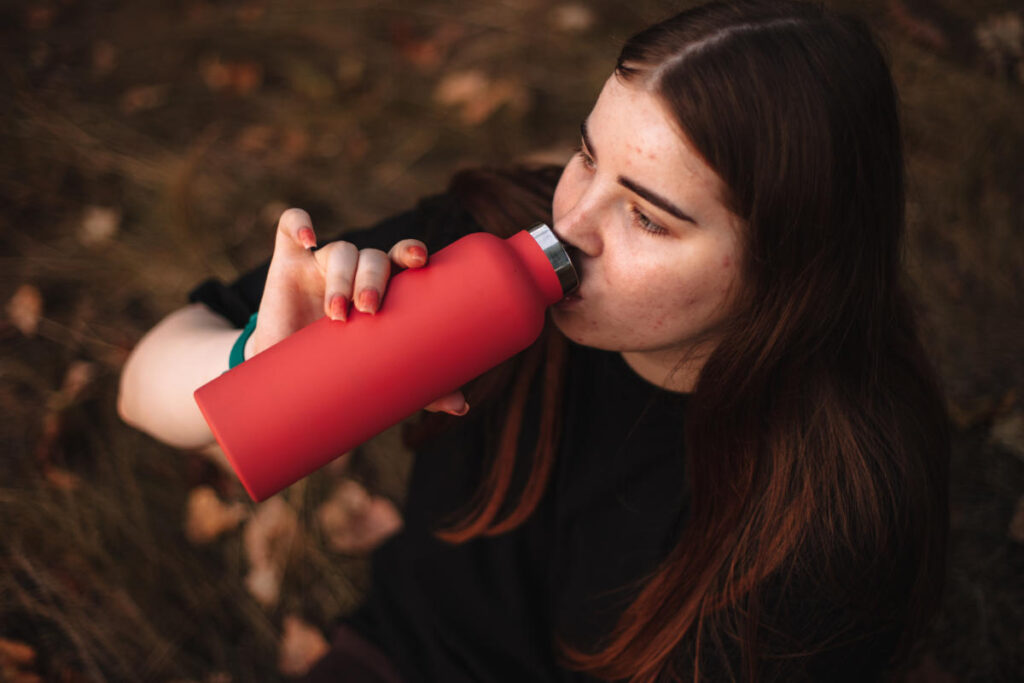
As I told you while consuming moldy water isn’t ideal, the severity of health effects varies depending on several factors, including the type of mold, the amount ingested, and your individual health.
For healthy adults, a single accidental exposure usually doesn’t cause serious problems. However, it’s important to be aware of the potential health risks:
1. Short-Term Gastrointestinal Issues
Mold ingestion can irritate the digestive system, potentially causing nausea, vomiting, and diarrhea. These issues are usually short-lived and resolve on their own, especially with increased fluid intake.
2. Respiratory Problems
Inhaling or ingesting mold spores can trigger respiratory problems, particularly in individuals with allergies or asthma. Symptoms may include coughing, wheezing, congestion, and difficulty breathing.
3. Skin Irritation
Direct contact with moldy water can irritate the skin, causing redness, itching, and rashes.
4. Allergic Reactions
People with mold allergies may experience a range of allergic reactions after consuming moldy water, including headaches, fatigue, stuffy nose, and itchy eyes. In severe cases, mold allergies can trigger anaphylaxis, a life-threatening reaction requiring immediate medical attention.
5. Fatigue and Headache
Regular low-level exposures to certain mycotoxins have been linked to general tiredness, lethargy, lack of focus and headaches.
6. Long-Term Effects:
The long-term health effects of chronic exposure to moldy water are still being studied. However, some potential concerns include:
Weakened Immune System: Repeated exposure to mold toxins may suppress the immune system, making you more susceptible to infections.
Neurological Issues: In rare cases, some studies suggest a possible link between chronic mold exposure and neurological problems like headaches, memory loss, and difficulty concentrating.
What to Do if You accidentally Consume Moldy Water
Here’s what to do if you suspect you’ve ingested moldy water:
1. Stop Drinking Immediately
This might seem like common sense, but it’s crucial to stop consuming the potentially contaminated water as soon as possible. Every additional sip increases your exposure to mold spores and toxins.
2. Flush Your System with Clean Water
Hydration is key in this situation. Drink plenty of clean water, preferably bottled water from a trusted source or water that has been filtered and disinfected.
Increasing your fluid intake helps dilute any remaining mold spores or toxins in your system and promotes their elimination through urination.
3. Rinse Your Mouth Thoroughly
Rinsing your mouth with clean water helps remove any lingering mold spores that may be present. This can further minimize potential exposure. Use plain water, not mouthwash, as some mouthwashes may contain alcohol which can irritate the mucous membranes.
4. Monitor Yourself for Symptoms
Be aware of any symptoms you might experience after consuming the moldy water. Keep an eye out for possible side effects over the next 24-48 hours such as stomach upset, headaches, coughing or skin rashes. Note their severity and timing.
The timeframe for symptom onset can vary depending on the type and amount of mold ingested, but some common signs to watch out for include:
- Nausea, vomiting, and diarrhea are common reactions to mold ingestion. These issues are usually short-lived and resolve on their own with increased fluid intake.
- Respiratory system, causing coughing, wheezing, congestion, and difficulty breathing. Individuals with allergies or asthma are more susceptible to these effects.
- Direct contact with moldy water can irritate the skin, leading to redness, itching, and rashes.
- Allergic reactions after consuming moldy water, including headaches, fatigue, stuffy nose, and itchy eyes. In severe cases, mold allergies can trigger anaphylaxis, a life-threatening reaction requiring immediate medical attention.
If you experience any of these symptoms, especially if they are severe or persist for more than a day, consult a doctor for proper diagnosis and treatment.
5. Seek Medical Attention (When Necessary)
While healthy adults may not experience serious issues from a single accidental exposure, seeking medical advice is always recommended if you have concerns. This is particularly important for Individuals with Weakened Immune Systems, Pregnant Women, Infants and Children or Anyone Experiencing Concerning Symptoms.
If your symptoms are mild, the doctor may simply recommend monitoring your health and increasing fluid intake to flush out any remaining mold.
For more severe symptoms, such as difficulty breathing or allergic reactions, the doctor may prescribe medications like antihistamines, bronchodilators, or corticosteroids to manage the symptoms.
In rare cases, if a serious fungal infection is suspected, antifungal medications might be necessary.
6. Consider Activated Charcoal
Charcoal supplements may help adsorb mycotoxins in the gut if taken shortly after mold water intake, before absorption. However, only use activated charcoal under medical guidance and not as a replacement for seeking prompt care for serious exposures.
Can mold grow in cold water?
While ideal temperatures for mold growth are between 60 and 80 degrees Fahrenheit (15-27 degrees Celsius), mold spores can still germinate and grow in cold water. Mold can survive and even reproduce at temperatures as low as 40 degrees Fahrenheit (4 degrees Celsius). This means cold water isn’t necessarily a safeguard against mold growth, especially if other favorable conditions like moisture and organic matter are present.
Can mold survive boiling water?
Boiling water can effectively kill mold spores. The high temperature (around 212 degrees Fahrenheit or 100 degrees Celsius) denatures the proteins in mold spores, destroying them. However, boiling doesn’t eliminate existing mold colonies or the toxins they may produce. If you’re concerned about mold in your water, boiling is a good first step to kill spores, but you’ll still need to address the source of the mold and clean any containers thoroughly.
Does bleach water stop mold?
Bleach can be an effective disinfectant against mold spores on surfaces. A diluted bleach solution (prepared according to label instructions) can kill mold spores on contact. However, bleach isn’t a complete solution for eliminating mold in water. While it may kill some spores, it won’t eliminate existing mold colonies or remove mold toxins from the water itself. Bleach is also not suitable for routine water disinfection due to potential health risks if ingested.
Can mold grow in chlorinated water?
Chlorine, a common disinfectant used in public water supplies, helps kill bacteria and other microorganisms. While chlorine can reduce the overall mold spore count in treated water, it may not completely eliminate them. If there are persistent moisture issues or organic matter present in the water, mold spores can still survive and potentially multiply.
How long does it take for mold to grow from water damage?
The timeframe for mold growth after water damage depends on several factors, including:
- Moisture Level: The more moisture present, the faster mold can grow.
- Temperature: Warmer temperatures favor faster mold growth.
- Airflow: Limited air circulation creates a stagnant environment ideal for mold.
- Mold Spore Type: Different mold species have varying growth rates.
In ideal conditions, visible mold growth can appear within 24-48 hours after water damage. However, it’s important to remember that mold growth can sometimes start even before it’s visible. Early detection and prompt action are crucial to prevent extensive mold problems. If you experience water damage, address the source of moisture as soon as possible and inspect the area for signs of mold growth.
Conclusion
Mold can creep into your water supply or even your Gatorade drinks can get moldy, but don’t panic! While ingesting moldy water isn’t ideal, the effects vary depending on the type and amount consumed, and your health. Usually, healthy adults recover from accidental exposure on their own.
Watch out for signs of moldy water like discoloration, unusual smells, or changes in taste. If you think you’ve consumed moldy water, stop drinking it immediately, drink plenty of clean water, and monitor yourself for symptoms. Seek medical attention if symptoms are severe or you feel sick.
To prevent mold growth, address leaks, maintain ventilation, and clean your water filters and bottles regularly.


